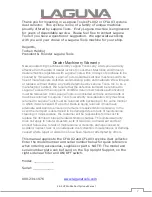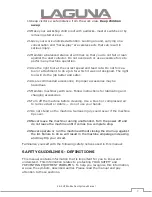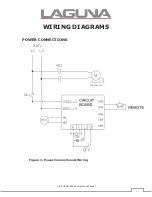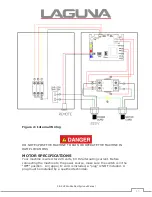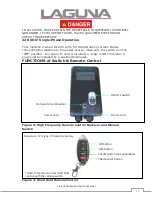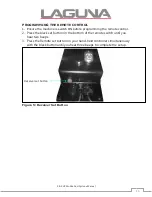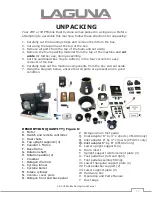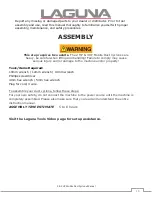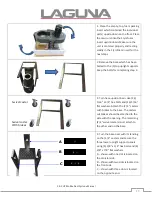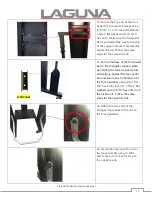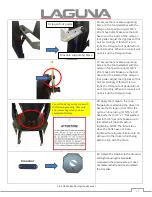
2 & 3 HP Mobile Dust Cyclone Manual
10
Wear respirator.
Fine dust that is too small to be caught in the filter will be
blown into the ambient air during operation. Always wear a NIOSH-approved
respirator during operation and for a short time after to reduce your risk of
permanent respiratory damage.
Emptying dust.
When emptying dust from the collection container, wear a
respirator and safety glasses. Empty dust away from ignition sources and
into an approved container.
Disconnecting power supply.
Turn the switch off, disconnect the dust
collector from the power supply, and allow the impeller to come to a
complete stop before leaving the machine unattended or doing any service,
cleaning, maintenance, or adjustments.
Suspended dust particles and ignition sources.
Do not operate the dust
collector in
areas were explosion risks are high. Areas of high
risk include,
but are not limited to, areas near pilot
lights, open flames, or other ignition
sources.
Fire suppression.
Only operate the dust collector in locations that contain a
fire suppression system or have a fire extinguisher nearby.
Impeller hazards.
Do not place your hands or tools near the open inlet
during operation for any reason. The powerful suction could easily cause
accidental contact with the impeller, which will cause serious personal injury
or damage to the machine. Always keep small animals and children away
from open dust collection inlets.
Avoiding sparks.
Do not allow steel or rocks to strike the impeller
—
this
may produce sparks. Sparks can smolder in wo dust for a long time before a
fire is detected. If you accidentally cut into wood containing metal (nails,
staples, spikes, etc.), immediately turn
off
the dust collector, disconnect it
from power, and wait for the impeller to stop
—
then empty the collection
container into an approved airtight metal container.
Operating location.
To reduce respiratory exposure to fine dust, locate
permanently installed dust collectors away from the working area, or in
another room that is equipped with a smoke detector. Do not operate the
dust collector in rainy or wet locations
—
exposure to water may create a
shock hazard or decrease the life of the machine.
Static electricity.
Plastic dust lines generate high amounts of static
electricity as dust chips pass through them. Although rare, sparks caused by
static electricity can cause explosions or fire. To reduce this risk, make sure
all dust lines are thoroughly grounded by using a grounding wire.
Summary of Contents for CFLUX2
Page 35: ...2 3 HP Mobile Dust Cyclone Manual 35 Parts Breakdown CFLUX 2 3 Fig 9 ...
Page 36: ...2 3 HP Mobile Dust Cyclone Manual 36 Figure 10 Fan Motor Switch SECTION A Close up view ...
Page 38: ...2 3 HP Mobile Dust Cyclone Manual 38 Figure 12 Panels Lock SECTION C Close up view ...
Page 39: ...2 3 HP Mobile Dust Cyclone Manual 39 Figure 13 Barrel insert SECTION D Close up view 16H 16P ...
Page 48: ...2 3 HP Mobile Dust Cyclone Manual 48 NOTES Ph 800 234 1976 www lagunatools com 100721 ...


